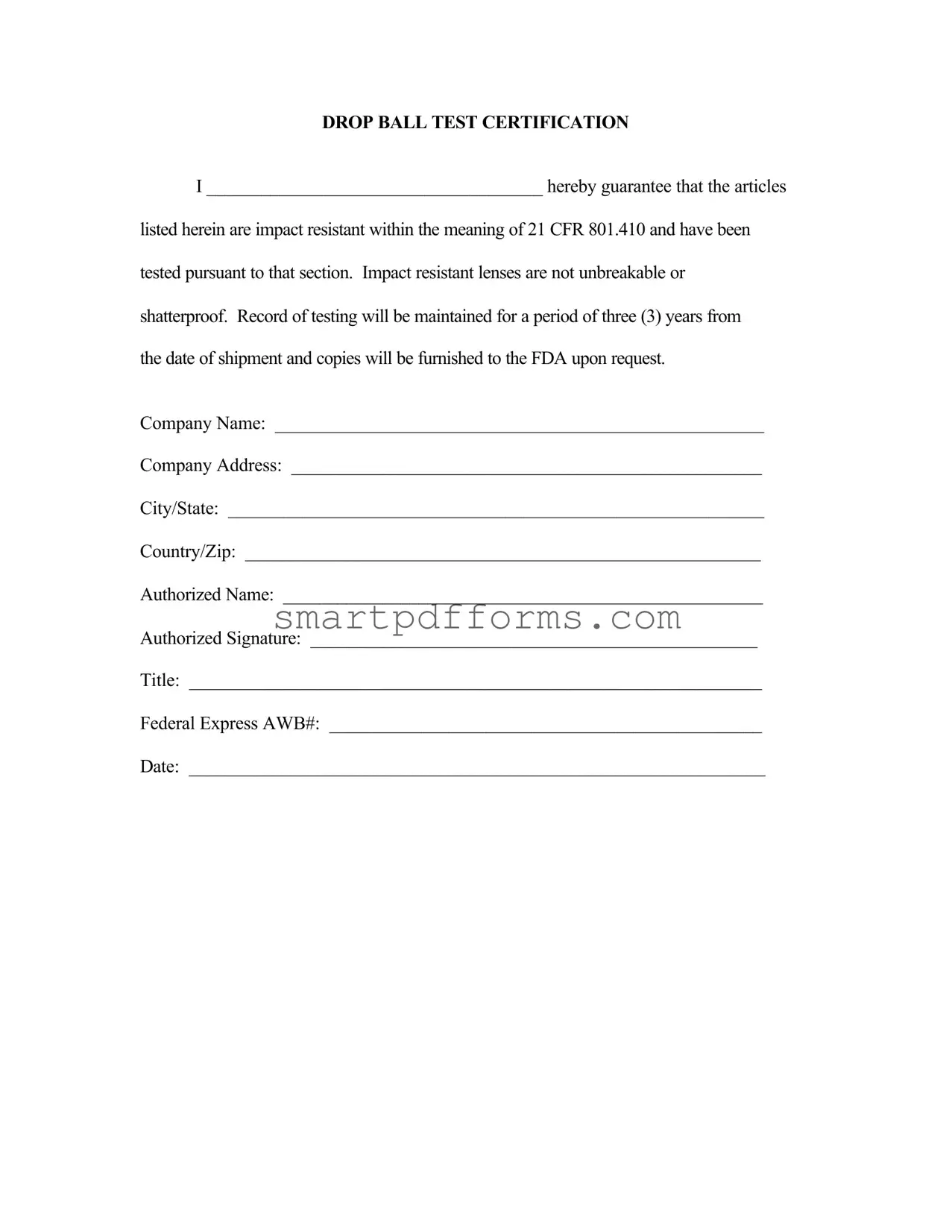Blank Drop Ball Certificate PDF Template
The Drop Ball Certificate form is an official document that guarantees the impact resistance of certain articles, specifically within the context of 21 CFR 801.410. This certification ensures that these items have undergone rigorous testing to meet specific safety standards, although it acknowledges that impact-resistant lenses are not unbreakable or shatterproof. Individuals responsible for these articles are required to maintain testing records for three years and must furnish copies to the FDA upon request.
To ensure compliance and guarantee your products meet the requisite safety standards, click the button below to fill out your Drop Ball Certificate form today.
Make This Document Now
